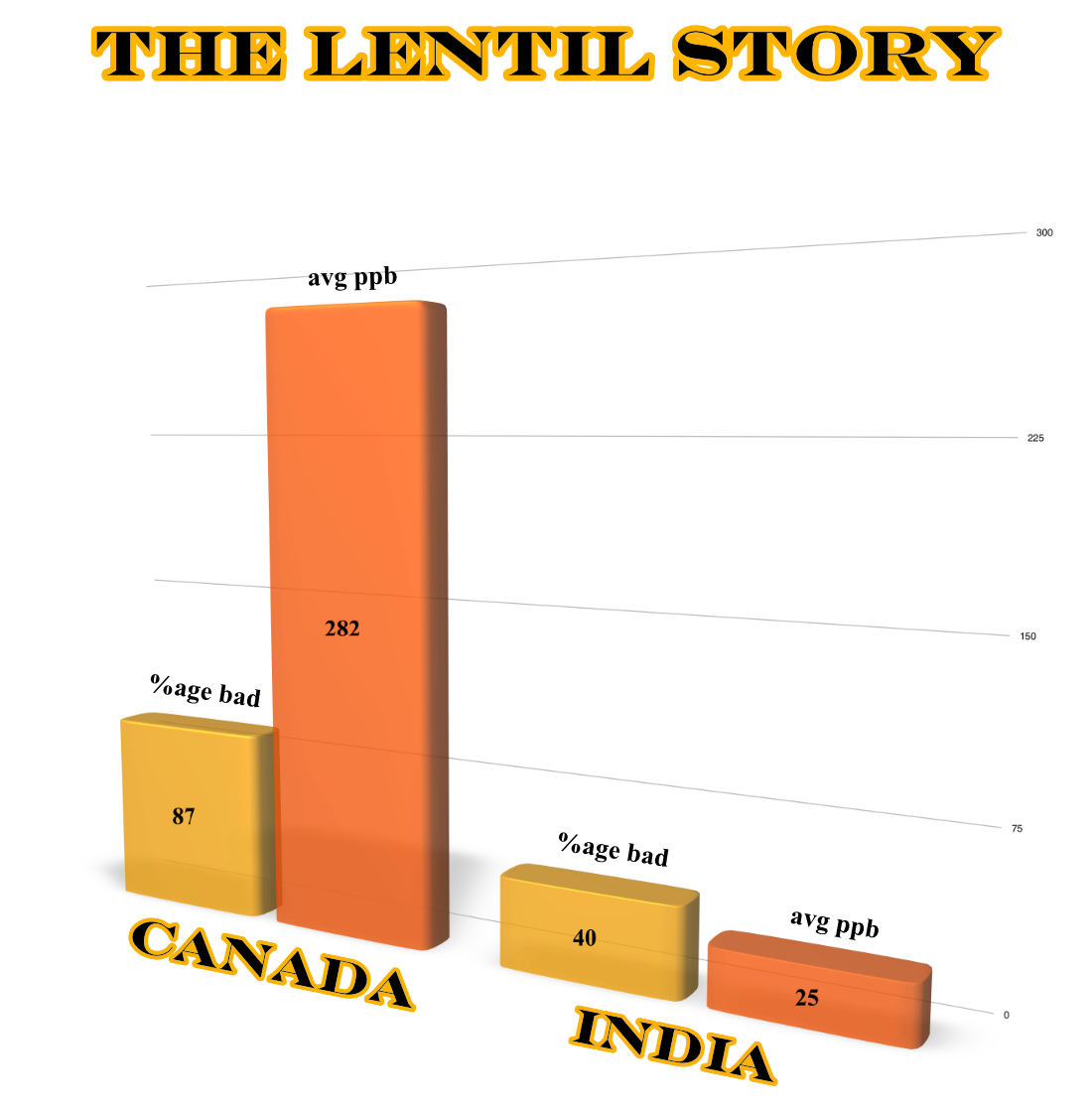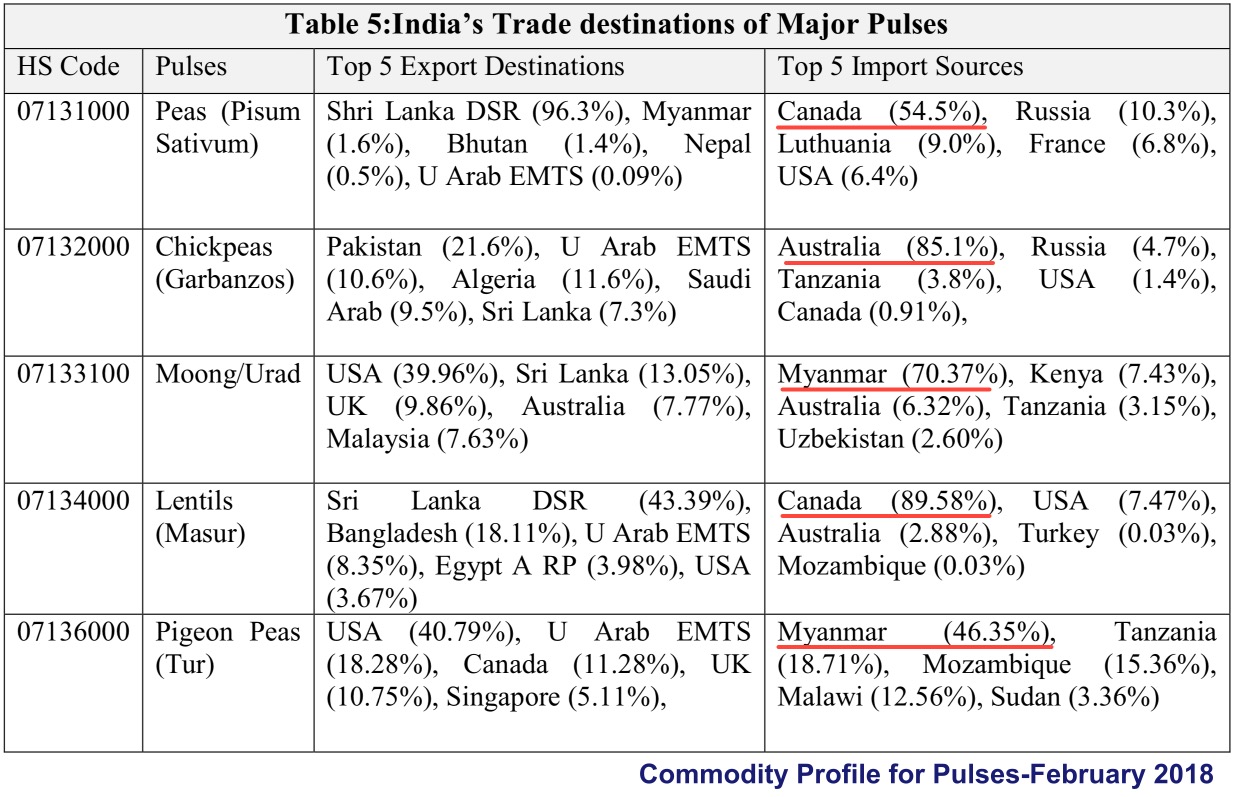There is a press report going around about a warning from me that people of India might be getting a steady dose of slow poison through lentils in their diet. India appears to import a lot of pulses from Canada, and from Australia and Myanmar. I have seen test records of Canadian grown pulses which are all desiccated by glyphosate, unless one sources certified organic products which are not available in any large quantity. I also have seen results of test on Australian Moong Dal (known as mung beans in Canada) as tested by CFIA which also had over a thousand ppb of glyphosate. India is importing these. Consumers do not seem to know if and when they are buying Canadian lentils or lentils mixed with local produce, and how much glyphosate is in their dal.
The third country that India appears to import a lot from is Myanmar. I have not seen any rest results from Myanmar, but from what I hear about Myanmar buying a lot of glyphosate for the purpose of growing pulses, which are exported to India. So, all in all, I suspect glyphosate in entering the Indian stomach in ever increasing doses and is likely one of the major contributing factors behind the apparent runaway increase of autoimmune diseases I see among friends and family this time around in India, something that I did not see some years ago.

Meanwhile, there is perhaps a misconception that dal grown in India is more toxic with glyphosate, than pulses imported from Canada. I do not believe that to be true, although a few small samples of yellow split pea from India shows high glyphosate. In general, pulses grown in Canada and USA have significantly higher level of contamination by glyphosate in test after test conducted by CFIA.

The graphs above shows the story of chickpea grown in North America, organic and conventional, compared with the same in the rest of the world combined. Yes organic is cleaner than conventional, but both are astronomically more contaminated if grown in North America compared to anywhere else.

Chart above shows all the lentil samples from Canada placed against India. 87% of Canadian lentils are contaminated and the average level of contamination is 282 ppb. Only 40% of Indian samples were contaminated while the average was 25 ppb.

But at the end of the day, the people of India need to find ways to force their government to initiate broad based testing of food for glyphosate concentration and to make all results public. That is the only way Indian consumers will know how much of glyphosate they are consuming daily from their food. Also, they should most certainly get their government to separately test imported pulses and all grains from western producers who are known to use glyphosate as a desiccant, and be very careful of importing crops with glyphosate content that is much higher than the local produce.
As to the safe maximum residue level, the people should demand to see the documents that prove that glyphosate, at any level of contamination, has been actually proven to be safe for mammals.
